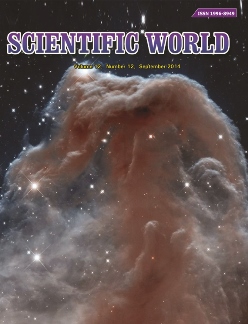BACTERIOLOGICAL CHANGES OF BURN WOUNDS WITH TIME AND THEIR ANTIBIOGRAM
DOI:
https://doi.org/10.3126/sw.v12i12.13601Keywords:
Burn, Burn wounds infection, P. aeruginosa, Antibiotics resistanceAbstract
A prospective study was carried out in 42 burn patients admitted in burn unit of Bir Hospital over a period of six months from September 2011 to February 2012 to evaluate time-related changes in aerobic bacterial colonization and their susceptibility pattern. Periodic swabs were taken from the burn wound on 1st, 2nd, 3rd and 4th weeks to see the changing pattern of organisms during hospital stay of patients. Wound swabs obtained from the burn patients were subjected to microbiological analysis. The isolates were identified by standard microbiological techniques and their antibiotic susceptibility was determined by using Kirby-Bauer disk diffusion techniques. In the present study burn injury was highest in the age group 25-34 years (28.6%). Male to female ratio was 1:1.5. Fire was the major cause of burn (78.6%) followed by scald burn (7.1%). Among the 168 samples, single organism was isolated in 47.6% samples and mixed organisms in 39.9% and no growth in 12.5%. A total of 215 bacterial species were isolated from 168 samples in which Pseudomonas aeruginosa accounted for the highest percentage 45.6% followed by Staphylococcus aureus (19.1%), Acinetobacter spp. (17.7%) and coagulase negative Staphylococci (CONS) (5.6%). Gram negative bacteria were the dominating bacteria all over the study period and exhibited lower sensitivity to most of the antibiotic used. Furthermore, P. aeruginosa was least sensitive to most antibiotics used. Amikacin was the drug of choice for most Gram negative bacteria and vancomycin was found to be susceptible drug for Gram positive organisms (S. aureus and CONS). Continuous survey and analysis of changing microbial flora and their antibiogram in burn patients help in timely detection and control of spread of infection and also help to review effective antibiotic policies.
Scientific World, Vol. 12, No. 12, September 2014, page 70-76




